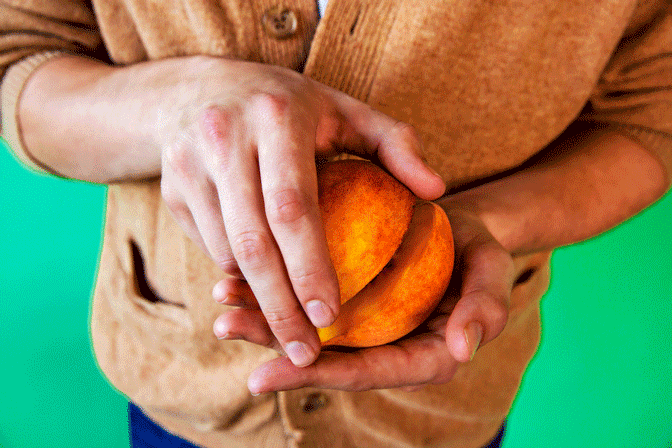
After his move to Nashville from Fort Valley, Georgia, in 2010, Stephen Rose felt homesick. Homesick for peaches, that is. But not just any peaches—he longed for the sweet and juicy ones from his childhood that Georgia is famous for producing.
He spent two summers hunting for good, fresh peaches in Nashville, but nothing could satisfy his taste buds (as the quote from Franco-British novelist George du Maurier that ends each of their campaigns says, “An apple is an excellent thing—until you have tried a peach”).
So in 2012, Stephen and his wife founded The Peach Truck. Partnering with Stephen’s hometown peach farm, they load a crop of peaches onto the back of a truck and tour Tennessee, Kentucky, Ohio, Indiana, and Pennsylvania to sell them every summer.
“It’s a logistical nightmare what we do, but it’s worth it,” says Stephen.
Have a natural and authentic marketing strategy
While Stephen keeps in touch with customers during their off-season, they only have a product to sell online and at various tour stops for 12 weeks each year. And even that is outside their control.
“This year, peach season might be about 8 weeks because the warm winter has affected the crop,” Stephen says, explaining that peaches need cold winters for the trees to rest and hot summers for the fruit to produce its sugar.
The ups and downs of growing peaches is something Stephen likes to share with customers in the occasional campaigns he sends throughout the year. Updates on the weather and size of the crop help make customers feel invested, and these campaigns—sent to their full list—boast open rates between 37% and 46%.

For Stephen, the timing of these emails is based on a gut instinct. “We don’t want our customers to forget about us, but we also don’t want them to be bothered,” he says. “In the off-season, we probably send an email every couple of months—or just when we have something to say.”
As they get closer to the kickoff of peach season—which arrives in mid-May—they start a countdown to build anticipation, and then they send an email every week throughout the summer with The Peach Truck’s tour schedule. According to Stephen, the start of peach season should feel like the opening day of baseball.
“I guess you could say our marketing strategy is authenticity,” he says. “But I also think getting stuck on strategy can get in the way of an authentic voice. Everything we do is in the moment because it’s dependent on seasonality.”
Learn how to talk to your audience
The audience for Stephen’s fresh peaches—and the timeless aesthetic he’s created for the brand—is a broad one.
“Our audience is made up of very different people,” he says. “You can be standing in line at one of our tour stops with grandmas who love a great peach or with hipsters who love the design of our brand and follow us on Instagram.”
Whether he’s creating an email campaign or posting on Instagram and Facebook, the images he uses reflect the brand’s messaging. Their Instagram feed feels like an old photo album, full of warm, vibrant photos of peaches, recipes, nature, and family. And their email campaigns always include a single image they hope will speak to customers. “If we get the image right, then hopefully the message will be given a chance.”
That same attention to detail goes into writing for campaigns. Stephen’s email campaigns are more like handwritten letters; he wants his voice to come across in everything he says, so customers know the company cares. And with MailChimp’s list segmentation tools, he’s able to send personalized campaigns to customers based on geolocation or signup source: whether they filled out a pop-up form online or subscribed in person at one of the tour stops.
“On our tour, our point of entry is that you have to buy a 25-pound box of peaches for $40, so we like to send those customers tips on canning and freezing peaches, as well as recipes,” Stephen says. “And we might send some special offers to our customers who order online.”
Focus on your core values
Looking ahead, Stephen wants to explore marketing automation. More specifically, how he can use abandoned cart with his Shopify store to encourage customers to return and complete their purchase. Other than that, he’s happy with their current strategy
“All our decisions are centered around whether they will help us keep the promise of fresh peaches straight off the tree. We won’t sacrifice that for anything.”
